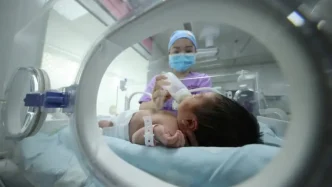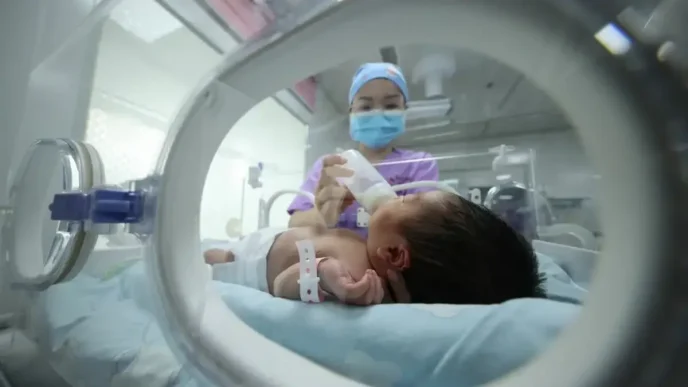The Philippines is grappling with a alarming surge in rabies-related deaths, with the Department of Health (DOH) reporting a record 426 fatalities in 2024, nearly double the 235 cases recorded in 2020. As the virus continues to claim lives at a 100% fatality rate, health officials are urging pet owners to vaccinate their animals annually to curb the spread of this preventable yet deadly disease.
The DOH data, released on Saturday, paints a grim picture: 45% of last year’s cases—193 in total—resulted from bites by pets, predominantly dogs and cats. A significant 41% of these cases involved unvaccinated animals, while 56% were linked to pets with uncertain vaccination status. Health Secretary Teodoro Herbosa has reiterated the severity of the situation, warning that rabies can be transmitted through bites, scratches, or even saliva coming into contact with open wounds, eyes, nose, or mouth. “Rabies is dangerous and fatal,” Herbosa said in a statement. “The fatality rate for cases in 2024 was 100 percent.”
A Growing Public Health Crisis
Over the past five years, rabies has claimed 1,750 lives across the Philippines, with regional disparities highlighting the uneven distribution of risk. Central Luzon reported the highest number of cases in 2024 with 56 deaths, followed by Soccsksargen with 43, and Calabarzon with 35. While the first two months of 2025 show a slight decline—55 cases compared to 90 in the same period last year—the numbers remain concerning for a disease that is entirely preventable through vaccination.
Rabies symptoms in humans often appear two to three months after exposure, though they can manifest as early as a few weeks or as late as a year, depending on the viral load and the location of the bite or scratch. Initial signs include fever, weakness, and swelling at the wound site. As the virus progresses, it can cause hydrophobia (fear of water), confusion, paralysis, and rapid inflammation of the brain and spinal cord, ultimately leading to death. “As the virus spreads, it causes rapid inflammation of the brain and spinal cord, ultimately leading to certain death,” Herbosa explained.
Vaccination as the First Line of Defence
The DOH’s primary recommendation is clear: pet owners must ensure their animals are vaccinated annually against rabies. This simple measure could significantly reduce the risk of transmission, particularly given the high proportion of cases linked to unvaccinated or status-unknown pets. Local governments and veterinarians across the country are being mobilised to provide accessible vaccination services, often at no cost to owners. The public is also advised to avoid contact with unfamiliar animals, especially those displaying aggressive behaviour—a common sign of rabies infection.
For those who have been bitten or scratched, immediate action is critical. The DOH recommends washing the wound with soap and running water as soon as possible, followed by a visit to the nearest health centre or Animal Bite and Treatment Centre. These facilities offer free rabies vaccine shots and post-exposure prophylaxis, a treatment that can prevent the virus from taking hold if administered promptly.
Challenges in Awareness and Access
Despite the availability of vaccines and treatments, challenges remain in raising awareness and ensuring access, particularly in rural areas where veterinary services may be limited. Many pet owners are unaware of the need for annual vaccinations or the risks posed by unvaccinated animals. Cultural attitudes towards pet ownership, including the prevalence of stray dogs and cats in some communities, further complicate efforts to control the disease. In regions like Central Luzon and Soccsksargen, where cases are highest, local governments face the dual task of educating the public and scaling up vaccination campaigns.
The economic burden of rabies also cannot be ignored. Treating post-exposure cases places strain on public health systems, while the loss of life—often among working-age individuals—has broader social and economic impacts. Although exact figures are unavailable, the emotional toll on families and communities is evident, as rabies remains a preventable tragedy in an era of modern medicine.
A Call to Action
The DOH’s renewed push for pet vaccination comes as part of a broader strategy to eliminate rabies as a public health threat in the Philippines. The World Health Organization (WHO) has set a global target to end human deaths from dog-mediated rabies by 2030, a goal that requires coordinated efforts between governments, health agencies, and communities. For the Philippines, achieving this will mean addressing gaps in vaccination coverage, improving public education, and ensuring that treatment remains accessible to all.
As cases continue to mount, the message from health officials is unequivocal: prevention is the only cure. Pet owners are urged to take responsibility for their animals’ health, not just for their own safety but for the well-being of their communities. With rabies claiming hundreds of lives each year, the stakes could not be higher.
For now, the fight against rabies in the Philippines serves as a stark reminder of the importance of public health initiatives in tackling preventable diseases. While the numbers offer hope of a decline in early 2025, sustained action will be needed to turn the tide against this fatal virus.














